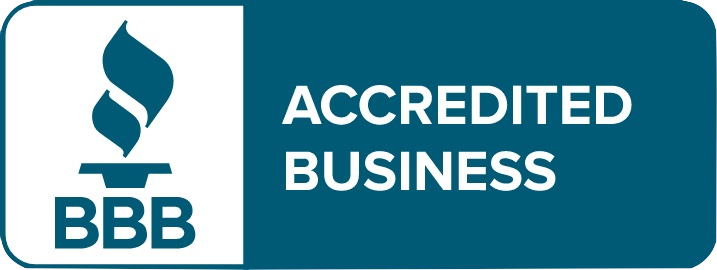The members of acclaimed hip-hop duo Outkast were a bit of an odd pair, both personally and stylistically. Rather than let this derail the group, they doubled down, releasing the critically lauded double album ‘Speakerboxxx/The Love Below’, the former a showcase of Big Boi’s no-frills approach, the latter an offbeat offering from the more eccentric Andre 3000. It was a high point in the aughts’ music landscape. A couple decades earlier the members of Van Halen found themselves at odds with lead singer David Lee Roth. The next thing you knew, DLR was embarrassing himself with half-baked cabaret covers while Van Hagar was using their sappy ballads to hawk Crystal Pepsi. Conflict; it can make or break you.
Conflict: Inevitable and Potentially Beneficial
Conflict is everywhere. Online, on TV, in the government. When it comes to constants, the presence of disagreement is right there beside death and taxes. Inevitably then, it will pop up in the office. Many people spend more time with their co-workers than they do with their families, and, given the ambition many of us have for our careers, and the collaborative nature of it all, it’s no wonder that frustration frequently sets in. People respond in different ways. Harsh words, disengagement or even employee turnover can be the result. Sometimes conflict causes people to act in ways that are simply unacceptable, and the so-affected person may not necessarily even be the one who was wrong about the original issue.
On the other hand, conflict, when handled correctly, can actually be beneficial. As Ashira Prossack of Forbes explains, it can provide a much needed challenge to the status quo, bringing about positive disruption.
“Healthy conflict leads to questions and discussions, opening up new ways of thinking and more innovative solutions to problems,” says Prossack. “Negative conflict affects employee performance and engagement and leads to declines in productivity.”1
The healthy workplace remains cognisant of potential or ongoing conflict, ensuring that it’s of the positive and productive variety. But how?
5 Keys to Conflict Resolution in the Workplace
Avoid Negative Conflict Through Creating the Right Culture. One way to ensure that the workplace is not saddled with the strain of negative conflict is to prevent it before it starts.
“Of course, we’d all prefer to avoid conflict arising the first place, so investing in a culture of positive employee relations is essential for a productive workplace,” says Dave Clough of the Association for Talent Development. “This includes treating all staff with dignity and respect, being transparent, and establishing fair management systems.It is up to senior management to create an environment of cooperation, not competition between staff, and the little things matter. Group activities, days out, well-being workshops, and team lunches help with this effort.”2
Communication. Stop me if you’ve heard this one before, but the key to a good relationship is proper communication. While this piece of dime store psychology has entered the realm of cliché, it turns out that it’s actually true. Often frustration and conflict arise when we feel that our voices aren’t being heard. Setting up a proper conversation between two or more parties can give all involved a chance to speak their mind. This can prove therapeutic, even if the change that one party desires is not realized. In order for this to be effective, the parties must bring their patience and resolve to actually listen. Too often we forgo listening in favor of planning our rebuttal, which only leads to more conflict. We may never come to agree with the other person’s point of view but, by showing them the respect of listening intently, we improve the nature of the conflict.
Don’t Get Personal. This can be tough to do when emotions are present, but we must remember to stick to the matter at hand, emphasizing facts and specifics as opposed to broad and damaging statements about the kind of person we are in conflict with. If name calling enters the equation, the conflict resolution process is officially off-track and has entered the realm of the unprofessional.
Gain Consensus. Even when we can’t agree on a proper course of action, we can at least agree about what we are disagreeing about. Be specific. Get the cards on the table. Often this is a step in the right direction.
Make a Plan and Follow Through. For negative conflict to be eradicated, a plan of action must be put in place. This doesn’t necessarily ensure that the conflicting parties will find the resolution ideal, but a plan must be agreed upon nonetheless. In this regard, conflict resolution is not unlike other forms of project management. What are the first steps? How will progress be monitored and measured? What constitutes success or failure?
A House Divided
No less a source than Abraham Lincoln tells us that a house divided against itself cannot stand. Nowhere is this more true than in the workplace. Whereas positive conflict resolution can result in innovation and progress, failure to resolve ongoing disputes can lead to stress and decreased productivity, ultimately fostering costly employee turnover. For these reasons, a good attitude and a strong commitment to the process are fundamental.
1
Prossack, Ashira. “How To Resolve Conflict In The Workplace.” Forbes. June 01, 2018. Accessed June 20, 2019. https://www.forbes.com/sites/ashiraprossack1/2018/05/31/how-to-resolve-conflict-in-the-workplace/#50bf74be387c.
2
Clough, Dave, Christina Esterly, and Joshua Pavek. “8 Essential Tips to Resolve Conflict in the Workplace.” Main. April 29, 2019. Accessed June 20, 2019. https://www.td.org/insights/8-essential-tips-to-resolve-conflict-in-the-workplace.



